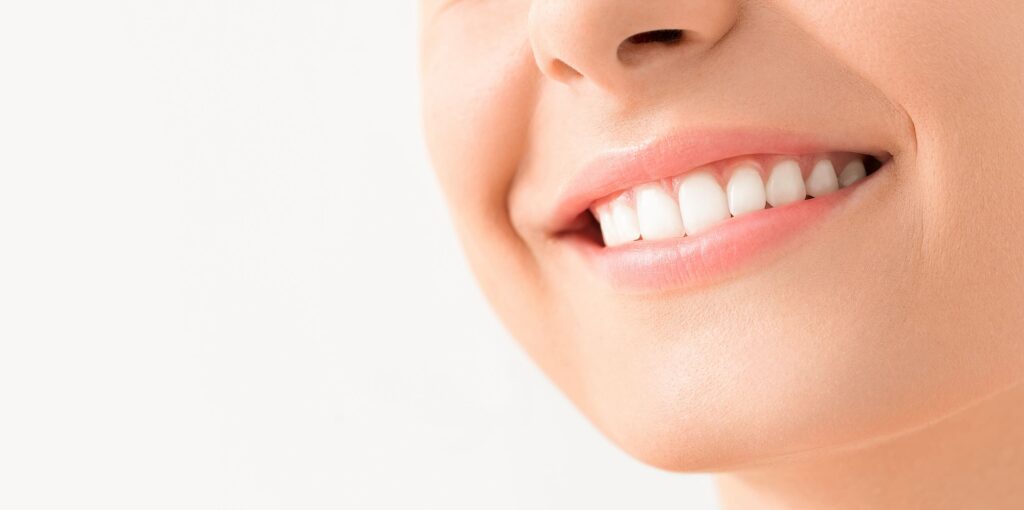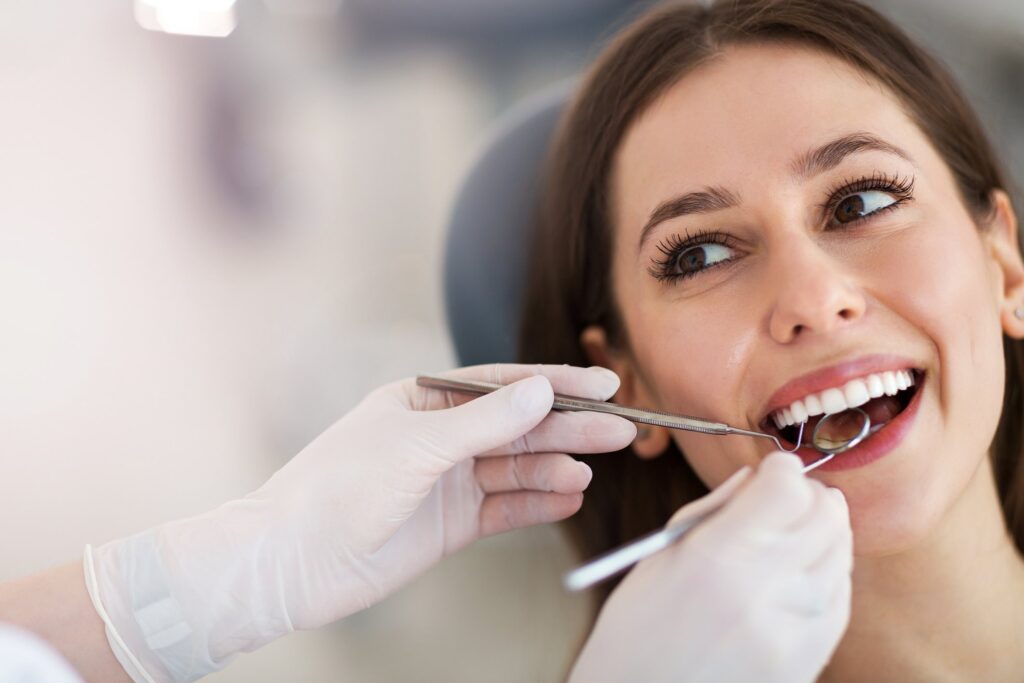Trending Cosmetic Dentistry Treatments in 2024
April 22nd, 2024
By Dr. Leyli Shirvani, My Dentist San Francisco
As a practicing dentist at My Dentist San Francisco, I have witnessed the remarkable evolution of cosmetic dentistry. In 2024, the field has seen innovative advancements, blending technology with artistry to achieve stunning results. This article delves into the latest trends in cosmetic dentistry, offering insights into each treatment's intricacies and benefits. My goal is to provide an expert perspective on these cutting-edge procedures, helping patients and fellow professionals understand their potential impact.

The Evolution of Cosmetic Dentistry
Cosmetic dentistry has undergone a transformation, driven by technological advancements and a deeper understanding of dental aesthetics. From traditional procedures to modern techniques, the focus has always been on achieving a harmonious balance between functionality and appearance. This evolution reflects a growing awareness of how dental health and aesthetics significantly impact overall wellbeing and self-confidence.
The Role of Technology in Modern Dentistry
Technology plays a pivotal role in today’s cosmetic dentistry. From digital imaging to advanced materials, these technological advancements have opened new horizons. They allow for more precise treatments, better aesthetic outcomes, and reduced recovery times. As a professional in this field, I constantly explore these technologies to provide the best possible care for my patients.
1. Digital Smile Design (DSD)
The Concept of Digital Smile Design
Digital Smile Design (DSD) stands at the forefront of cosmetic dentistry in 2024. This innovative approach involves using digital technology to analyze the patient’s facial and dental structures, enabling personalized smile design. DSD offers a visual preview of the expected results, ensuring that the treatments align perfectly with the patient’s aesthetic goals.
The Process of DSD
The DSD process starts with detailed imaging of the patient's face and teeth, followed by sophisticated software analysis. This analysis helps in understanding the harmonious relationship between the teeth, gums, lips, and facial features. As a practitioner, I use this information to design a smile that complements the individual's unique facial aesthetics.
Advantages of DSD
One of the most significant advantages of DSD is its predictability. Patients can visualize the outcome before the actual treatment, fostering a sense of involvement and confidence in the process. Furthermore, DSD allows for precise and minimally invasive procedures, enhancing the overall treatment experience.
2. Porcelain Veneers
The Popularity of Porcelain Veneers
Porcelain veneers continue to be a popular choice in 2024 for those seeking to enhance their smile. These thin, custom-made shells cover the front surface of teeth, correcting issues like discoloration, misalignment, or gaps. Their popularity stems from their ability to provide a natural-looking and long-lasting solution.
The Technicality of Veneer Application
The application of porcelain veneers is a meticulous process. It involves the removal of a small amount of tooth enamel to accommodate the veneer. This step is crucial for a seamless fit and natural appearance. The veneers are then bonded to the teeth, a process that requires precision and expertise.
Advancements in Veneer Technology
Recent advancements in materials and techniques have enhanced the quality and durability of porcelain veneers. Today’s veneers are more resistant to staining and mimic the light-reflecting properties of natural teeth more closely. As a result, they offer a more sustainable and aesthetically pleasing solution than ever before.
3. Teeth Whitening Techniques
The Demand for Brighter Smiles
Teeth whitening remains one of the most sought-after cosmetic dental treatments in 2024. A brighter smile is often associated with youth and health, and many patients seek effective and safe ways to achieve this. The market offers a range of options, from in-office procedures to at-home kits.
In-Office Whitening Procedures
In-office whitening procedures offer the advantage of being fast and effective, often providing noticeable results in a single visit. These treatments use stronger bleaching agents than those available for home use, making them more efficient. As a dentist, I ensure these procedures are performed safely, minimizing tooth sensitivity and protecting the gums.
Innovations in At-Home Whitening
The at-home whitening market has seen significant innovations. Modern kits now offer more comfort and customization, with tailor-made trays. While these methods are generally more gradual than in-office treatments, they provide a convenient and effective alternative for maintaining a bright smile. We usually combine both for persistent undesirable tooth colors.
4. Laser Gum Contouring
The Art of Gum Contouring
Gum contouring has emerged as a popular cosmetic dental procedure, especially for those with a 'gummy smile.' Using laser technology, excess gum tissue is carefully removed to expose more of the teeth, creating a more balanced and aesthetically pleasing smile.
The Precision of Laser Technology
Laser technology in gum contouring offers unparalleled precision. It allows for minimal invasiveness, reduced bleeding, and quicker healing times compared to traditional methods. As a practitioner, I find that this precision significantly enhances the overall outcome and patient comfort.
The Impact of Gum Aesthetics
Gum aesthetics play a vital role in the overall appearance of a smile. Properly contoured gums can make a significant difference, not just in the smile's appearance but also in the patient's self-confidence. Laser gum contouring provides a controlled and effective way to achieve this harmony.
5. Invisalign and Clear Aligners
The Rise of Invisalign
Invisalign and other clear aligners have revolutionized orthodontic treatment. These clear, custom-made aligners provide a discreet and comfortable alternative to traditional braces. They are particularly popular among adults who wish to correct their teeth alignment without the aesthetic impact of metal braces.
The Technology Behind Clear Aligners
The technology behind Invisalign and similar products involves 3D imaging and planning. Each aligner is designed to make small adjustments to the teeth's position, gradually moving them into the desired alignment. This technology allows for a more customized and efficient treatment plan.
The Benefits of Clear Aligners
Clear aligners offer several benefits, including aesthetics, comfort, and convenience. They are nearly invisible, causing minimal disruption to a patient's appearance. Additionally, they are removable, making it easier to maintain oral hygiene during treatment.
6. Dental Implants and Aesthetics
The Functionality and Aesthetics of Dental Implants
Dental implants have become a cornerstone in both restorative and cosmetic dentistry. They provide a permanent solution for missing teeth, preserving jawbone health and restoring full functionality. From an aesthetic perspective, implants can be designed to blend seamlessly with the natural teeth, enhancing the overall smile.
The Process of Dental Implantation
The process of dental implantation involves several stages, including the placement of a titanium post into the jawbone, followed by a period of osseointegration. Once the implant is securely integrated, a custom-made crown is attached. This multi-stage process ensures a stable and long-lasting result.
Technological Advancements in Implants
Technological advancements have greatly improved the success rate and aesthetic outcomes of dental implants. Computer-aided design and manufacturing (CAD/CAM), along with 3D imaging, allow for precise planning and placement. These technologies have made dental implants a more accessible and desirable option for many patients.
7. Composite Bonding
Understanding Composite Bonding
Composite bonding is a versatile cosmetic dental procedure used to correct various aesthetic issues such as chips, cracks, and gaps. It involves applying a tooth-colored resin to the affected area, which is then shaped and hardened with a special light. This procedure is often chosen for its simplicity and effectiveness.
The Art and Science of Bonding
The success of composite bonding lies in the skill of the dentist. It requires a keen eye for detail and a thorough understanding of dental aesthetics to blend the material seamlessly with the natural teeth. As a dentist, I find this procedure to be both an art and a science, requiring precision and artistic flair.
The Advantages of Composite Bonding
Composite bonding offers several advantages, including minimal invasiveness, immediate results, and cost-effectiveness. It's an excellent option for patients looking for a quick and affordable way to enhance their smile without undergoing extensive dental procedures.
8. Full Mouth Reconstruction
The Concept of Full Mouth Reconstruction
Full mouth reconstruction is a comprehensive approach to restoring both the function and appearance of the teeth and gums. It often involves a combination of various dental procedures, tailored to address extensive dental issues. This approach is particularly beneficial for patients with significant wear, damage, or alignment problems.
The Process and Planning
The process of full mouth reconstruction requires meticulous planning and coordination of multiple treatments. It may include procedures like crowns, bridges, implants, and orthodontics, depending on the patient's specific needs. The goal is to restore the mouth's functionality while also achieving a harmonious, aesthetically pleasing appearance.
The Impact on Patient's Life
Full mouth reconstruction can have a transformative impact on a patient's life. It not only improves oral health and functionality but also boosts self-esteem and quality of life. As a dentist, witnessing the positive change in my patients’ lives is one of the most rewarding aspects of my practice.
9. Biocompatible Materials in Cosmetic Dentistry
The Shift to Biocompatible Materials
In recent years, there has been a significant shift towards using biocompatible materials in cosmetic dentistry. These materials, designed to integrate seamlessly with the body's natural tissues, offer improved safety and compatibility. They are particularly important for patients with sensitivities or allergies to traditional dental materials.
Types of Biocompatible Materials
Biocompatible materials include ceramics, composite resins, and certain metals that are well-tolerated by the body. These materials not only reduce the risk of allergic reactions but also offer superior aesthetic results, closely mimicking the look and feel of natural teeth.
Advantages in Cosmetic Applications
The use of biocompatible materials in cosmetic dentistry is not just a health consideration; it's a cosmetic one too. These materials blend seamlessly with the natural dentition, offering a more natural appearance. Their durability and strength also mean that restorations are long-lasting, making them a sound investment for patients seeking cosmetic enhancements.
10. 3D Printing in Cosmetic Dentistry
Revolutionizing Dentistry with 3D Printing
3D printing technology has revolutionized many aspects of cosmetic dentistry. It allows for rapid prototyping. This technology has significantly reduced turnaround times and increased customization possibilities.
The Precision of 3D Printed Dental Solutions
One of the key benefits of 3D printing in dentistry is its precision. Digital models can be created with exact specifications, ensuring a perfect fit and optimal functionality of the dental appliances. This level of accuracy is crucial in cosmetic dentistry, where even a fraction of a millimeter can impact the overall aesthetic.
The Future of 3D Printing in Dentistry
As 3D printing technology continues to evolve, its applications in dentistry are expected to expand further. This could include the creation of more complex and customized solutions, potentially revolutionizing how we approach cosmetic dental treatments. The future looks promising, with possibilities for even more personalized and efficient care.
Final Thoughts
As we look at the trending cosmetic dentistry treatments in 2024, it's clear that the field is advancing rapidly, driven by technological innovations and a deeper understanding of dental aesthetics. As a dentist, I am excited to be at the forefront of these changes, offering my patients the latest and most effective treatments. Whether it's through the precision of Digital Smile Design, the beauty of porcelain veneers, or the innovation of 3D printing, cosmetic dentistry today is more capable than ever of transforming smiles and lives.
For anyone considering cosmetic dental treatments, the possibilities are vast and exciting. With advancements in technology and materials, combined with the skill and artistry of your dentist, achieving the smile of your dreams has never been more attainable.










